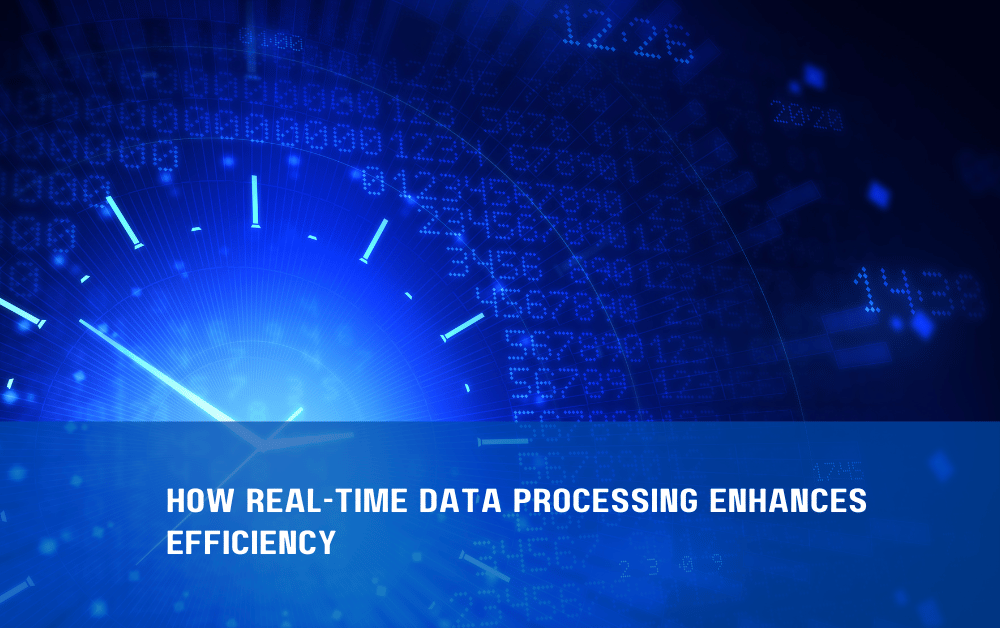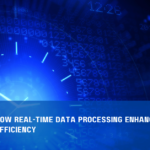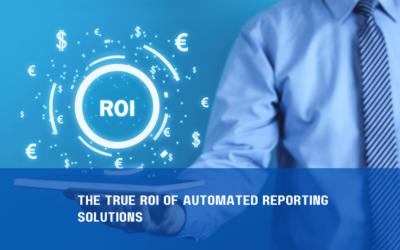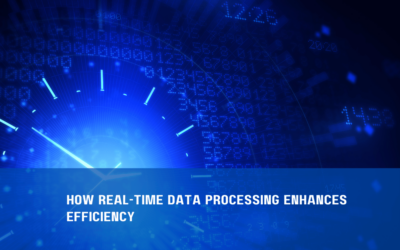In a digitally connected world, organizations handle massive volumes of data at breakneck speed—ranging from customer transactions and IoT device readings to social media streams. Traditional batch processing methods, while still relevant for certain use cases, can create time lags that lead to suboptimal decision-making and missed opportunities.
Enter real-time data processing: a paradigm shift that allows businesses to capture, analyze, and act on information as it happens.
In this blog, we’ll explore how real-time data processing fundamentally boosts efficiency, shortens response cycles, and drives competitive advantage.
Accelerated Decision-Making
Why It Matters
Today’s competitive landscape demands instant insights. Whether it’s a surge in e-commerce orders, a spike in insurance claims, or a sudden shift in market sentiment, organizations that can react in real time stand apart from those relying on post-event analysis.
Key Benefits
- Proactive Response: Real-time alerts enable teams to immediately tackle anomalies—like fraudulent transactions or system downtimes—preventing escalation.
- Faster Customer Service: Immediate access to up-to-date data means fewer delays in resolving inquiries or personalizing interactions.
- Agility in Operations: Rapid decision loops cut out lags, letting businesses rapidly pivot product strategies or campaign tactics.
Takeaway: Real-time data processing transforms organizations from reactive to proactive, sharpening their ability to seize sudden opportunities and mitigate risks promptly.
Streamlined Workflows and Reduced Bottlenecks
Why It Matters
Manual tasks and delayed data flows are productivity killers. Batch processing often forces employees or automated systems to wait for data updates, hindering continuous operational flow.
Key Benefits
- Continuous Data Feeds: Streaming technologies like Kafka, RabbitMQ, or real-time ETL tools ensure fresh data is always on hand for downstream systems.
- Automated Triggers: Event-based architectures let you set up workflows that auto-fire when certain conditions are met—like replenishing inventory if stock falls below a threshold.
- Fewer Hand-Offs: Real-time pipelines reduce the need for nightly or weekly batch runs, minimizing human oversight and manual re-checks.
Takeaway: By eliminating waiting times and automating routine tasks, real-time data processing accelerates throughput and slashes inefficiencies across the business.
Enhanced Customer Experiences
Why It Matters
Customers increasingly expect instant gratification—immediate confirmations, up-to-date account data, and seamless online transactions. Delays can erode trust and drive them toward faster-moving competitors.
Key Benefits
- Instant Updates: Whether it’s a real-time policy quote in insurance or real-time balance changes in fintech, customers appreciate immediate, accurate information.
- Dynamic Personalization: Streaming data analytics can feed recommendation engines that update in real time—tailoring offers or content to what’s happening now.
- Improved Reliability: Proactive monitoring of user behavior and service performance means fewer outages or slowdowns that frustrate customers.
Takeaway: By harnessing real-time data, organizations deliver modern, responsive customer journeys that build loyalty and positive brand impressions.
More Accurate Forecasting and Planning
Why It Matters
Forecasts built on stale data risk missing current trends—whether it’s a sudden surge in demand or an emerging market risk. Real-time data provides up-to-the-minute insights for better predictions and resource allocation.
Key Benefits
- Live Metrics for Resource Allocation: Operations teams can instantly see usage spikes and allocate inventory, staff, or bandwidth in real-time.
- Refined Predictive Models: Continuous data streams let machine learning models adapt faster to changing conditions, improving forecast accuracy.
- Risk Mitigation: Real-time anomaly detection flags potential supply chain disruptions or financial market volatility, prompting swift countermeasures.
Takeaway: Real-time data underpins dynamic forecasting, helping organizations stay agile and preventing overstocking, under-resourcing, or costly miscalculations.
Reduced Latency in Critical Systems
Why It Matters
Some sectors—like healthcare, finance, or IoT-driven industries—rely on low-latency systems for mission-critical decisions. Even minor lags can lead to significant financial loss, safety risks, or compliance breaches.
Key Benefits
- Instant Analysis for High-Stakes Tasks: Financial trading systems, for instance, need millisecond-level responses to seize opportunities or avoid losses.
- Safety-Centric Use Cases: In healthcare or industrial monitoring, real-time data helps teams catch potential failures before they cause harm.
- Compliance and Audit Trails: Continuous data collection ensures a robust audit trail and easier compliance reporting for regulators.
Takeaway: In latency-sensitive environments, real-time data processing is non-negotiable—ensuring critical decisions happen without disruptive delays or outdated information.
Overcoming Common Challenges
- Scalability
- Real-time solutions must handle continuous data flows, which can spike unpredictably. Adopting cloud-native architectures and auto-scaling helps.
- Real-time solutions must handle continuous data flows, which can spike unpredictably. Adopting cloud-native architectures and auto-scaling helps.
- Data Integration
- Legacy systems often lack modern APIs or real-time capabilities. A low-code approach like OutSystems can help build connectors quickly, consolidating data streams.
- Legacy systems often lack modern APIs or real-time capabilities. A low-code approach like OutSystems can help build connectors quickly, consolidating data streams.
- Data Quality and Governance
- High-speed data can magnify errors. Implement robust data validation, cleansing, and role-based access to maintain integrity and compliance.
- High-speed data can magnify errors. Implement robust data validation, cleansing, and role-based access to maintain integrity and compliance.
- Security
- Transferring data in real time poses security risks. Enforce encryption in transit and at rest, alongside continuous monitoring for anomalies.
Takeaway: Proper architecture planning, coupled with strong data governance and security practices, paves the way for smooth real-time operations.
Conclusion: Seizing the Real-Time Advantage
Real-time data processing isn’t just a technical upgrade; it’s a strategic enabler that turbocharges decision-making, customer engagement, and operational efficiency. By capturing and analyzing data the moment it appears, organizations can respond proactively, deliver seamless user experiences, and keep pace in an era of ever-changing market dynamics.
As technology evolves—from streaming platforms to low-code integration—embracing real-time data is no longer a luxury but a competitive imperative.
How RST Can Help
At RST, we specialize in building OutSystems-based solutions that integrate real-time data pipelines, automate event-driven workflows, and enable instant analytics—all without lengthy development cycles. Whether you’re optimizing claim processing in insurance, tracking live orders in e-commerce, or monitoring IoT devices, our low-code expertise can bring real-time capabilities to your operations efficiently and securely.
Ready to transform your organization with real-time data processing?
Contact RST today to discover how our tailored solutions can help you harness real-time insights, enhance operational agility, and deliver standout customer experiences in a hypercompetitive world.









